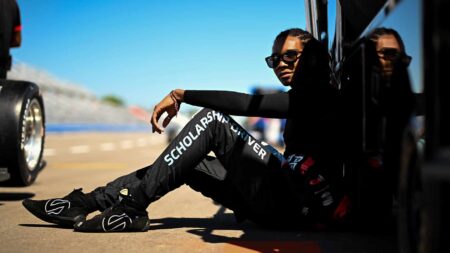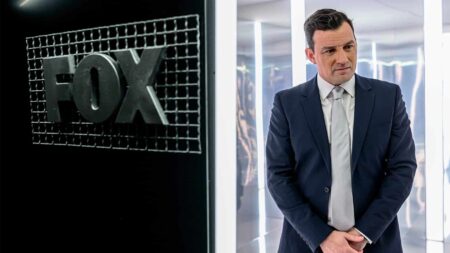
Lundgaard: McLaren can make history with F1/IndyCar double win
Christian Lundgaard is McLaren's new IndyCar star – and wants to make history by helping the team win both in F1 at Bahrain and at Long Beach Stateside on the same day

Parnelli Jones is one of the living legends of American racing, up there in the pantheon with Mario Andretti, AJ Foyt and Dan Gurney. Jones dominated three of the seven Indy 500s he started and won the race in 1963, beating Jim Clark. He looked to be a clear winner again in ’67 with Andy Granatelli’s STP turbine car, but a driveshaft bearing broke with only four laps to go and after the race Parnelli retired from driving open cockpit cars.

Indianapolis, USA. 30th May 1966. Parnelli Jones (Shrike-Offenhauser).
Parnelli continued to race in Trans-Am, Can-Am and off-road cars and trucks. He won the 1970 Trans-Am championship with a Bud Moore Ford Mustang, beating Mark Donohue and Penske Racing by a single point when Trans-Am was one of the USA’s top racing series, brimming with manufacturer-backed teams.

Can-Am race. Riverside, California, United States. 29 October 1967. Parnelli Jones (Lola T70-Chevrolet), 4th position.
He also won the Baja 1,000 in 1971 and ’72, and his resume includes a second career as a team owner in partnership with Vel Miletich. Vel’s Parnelli Jones racing won the Indy 500 with Al Unser in 1970 and ’71, three consecutive USAC championships in 1970-72 with Unser and Joe Leonard and a total of 40 USAC races between 1968-77. VPJ also produced the first Cosworth-powered Indycar, developed by John Barnard and driven successfully by Unser, and a similar F1 car raced by Andretti from late 1974 to early ’76. VPJ’s cars were usually beautiful and often revolutionary.

Ontario, California, USA. 3rd-10th March 1974. Al Unser (Eagle-Offenhauser), 2nd position, with Parnelli Jones.
Jones became a very successful Firestone tyre distributor and property developer in Southern California, and today, at 74, he remains as sharp as ever, and as knowledgeable a man about racing as anyone alive. Parnelli is delighted to see a unified IndyCar series emerge from the sport’s long civil war, but he emphasizes that the real work begins now.
“We need to build respect for Indycar racing again and the only way we’re ever going to get there is to make some dramatic changes,” Jones observes. “It’s a great start that the two series have merged, but it’s not the answer. When you’ve got 50 cars like NASCAR, then you’ve got something. It’s been embarrassing to go watch qualifying at Indianapolis in recent years. There’s nobody there. We used to have 250,000 people show up for the first day of qualifying. But today, we don’t have the respect for the Indy winners that we used to.”
Like many of us, Parnelli believes the most important factor is for the sanctioning body to take control and devise a new formula that will create plenty of competition among engine and car builders.
“Before we go forward they’ve got to step back and take a long look,” he says. “You can’t let the manufacturer run the series. What made all the series in the world in the first place, even NASCAR, is having all those different types of cars for people to root for. But it’s easier said than done.
“They’ve got to get more than one manufacturer. I have nothing against Honda, but right now Honda is calling the shots. NASCAR controls not only the drivers and teams but also the manufacturers, and that’s what Indycar racing needs to get back to.

Parnelli Jones brings the 1968 Lotus Turbine Indy Car back to the pits after taking a ceremonial lap of the track prior to the start of qualifying. 84th Indianapolis 500, Indy Racing Northern Light Series, Indianapolis Motor Speedway, 28 May, 2000
“We need to have competition and we need to look at it not just from a technical, Formula 1-type mentality. We need to look at it from an entertainment value because we have to compete against so many other entertainments in this country. It’s not about going out and seeing who’s the best racer and how many laps he can lead or how quick he can lap the field. Those days are gone.
“We need to be entertaining but you’re not going to get there with one manufacturer supplying the same thing to everybody because there’s no entertainment value.”
Jones believes the best way forward is to design a rocker arm engine formula, and that in the long run this would bring manufacturers back into Indycar racing in the best possible way.
“They ought to go to rocker arm engines because you can buy all the parts in the US,” he explains. “Get rid of the manufacturers. Let them go by the wayside and you would have the Childresses and Hendricks building engines for Indy. Make them 260 or 270 cubic inches and you can buy all those parts. Not everyone could build a Hendrick engine but they could grow into that.
“Don’t call them stock-blocks. Call them rocker arm engines and you could have guys building Chevies, Fords, Dodges and Toyotas. Then the manufacturers would come back and start supporting the teams that are running their product. But this time the sanctioning body controls it.”
Tony George (below) and the IRL might do well to consider Parnelli Jones’s ideas of how to secure a healthy future for Indycar racing.


Christian Lundgaard is McLaren's new IndyCar star – and wants to make history by helping the team win both in F1 at Bahrain and at Long Beach Stateside on the same day

Louis Foster starts his IndyCar journey this weekend in St Petersburg – can he emulate other British heroes like Nigel Mansell and Dan Wheldon?

Myles Rowe has rocketed through IndyCar's junior ladder with a story like no other – he tells James Elson why this upcoming year is more important than ever

Drive to Survive star Will Buxton has made the jump across the Atlantic to front Fox's new IndyCar coverage – he explained to James Elson why he thinks the championship is the most exciting series out there